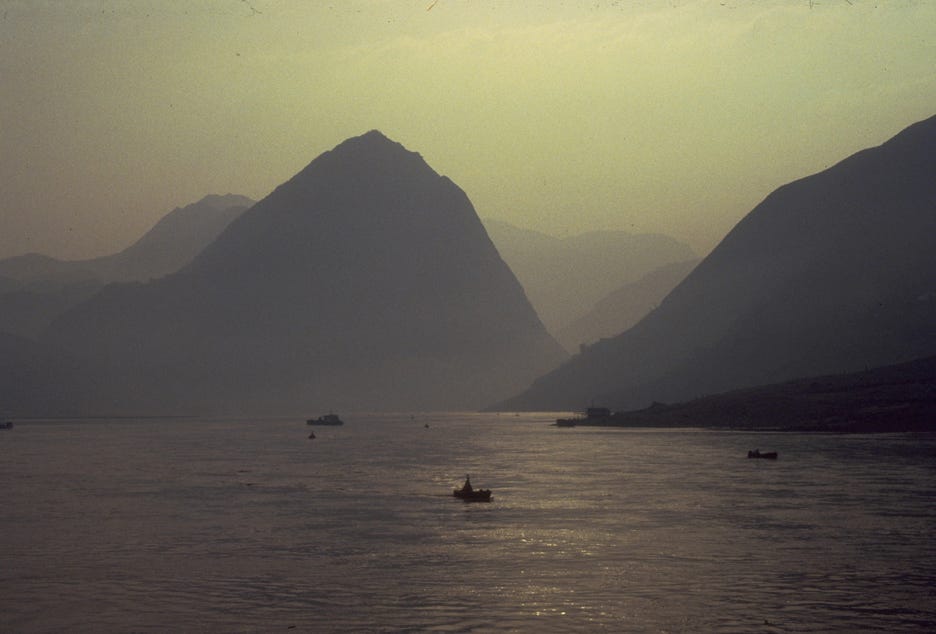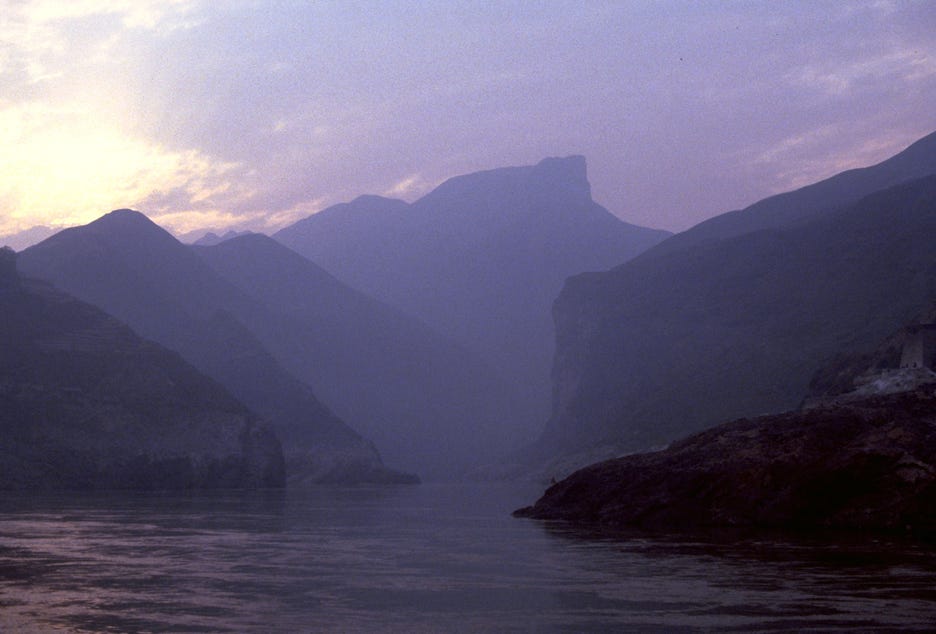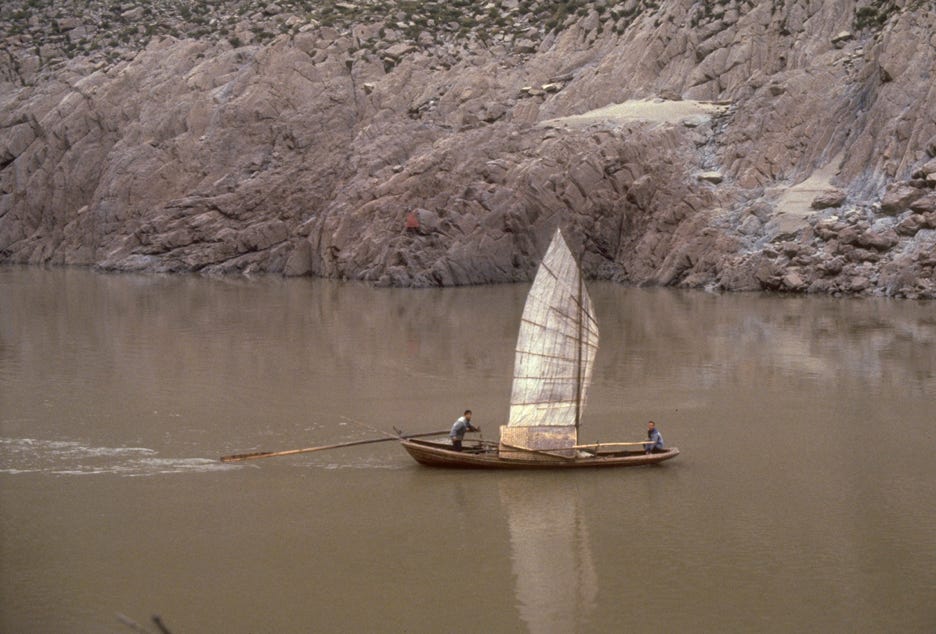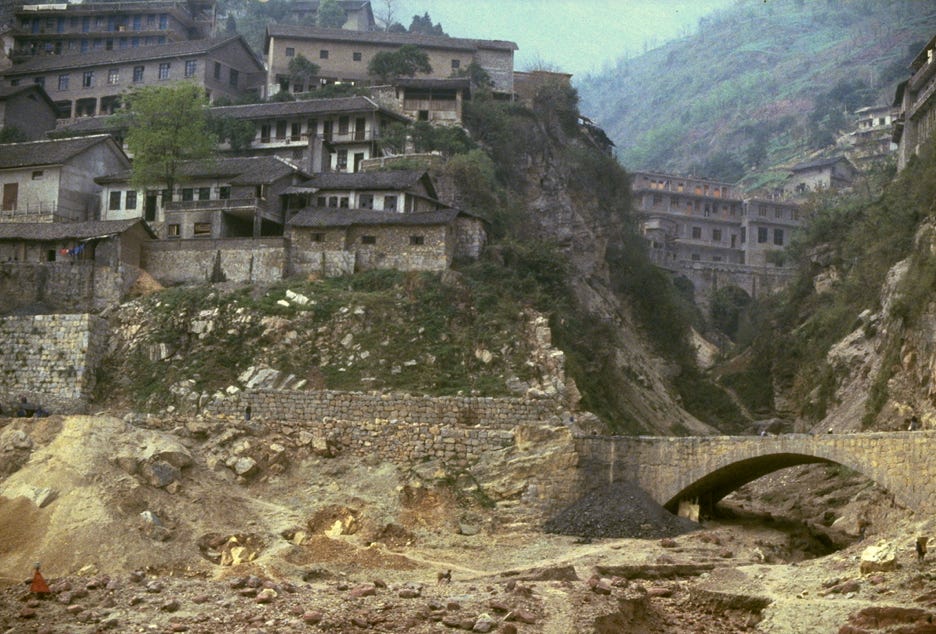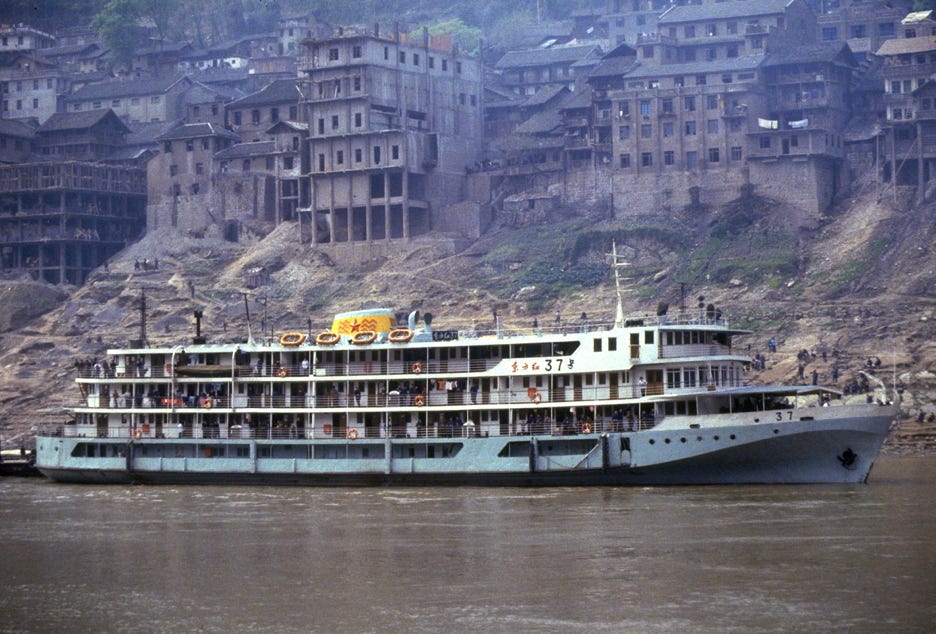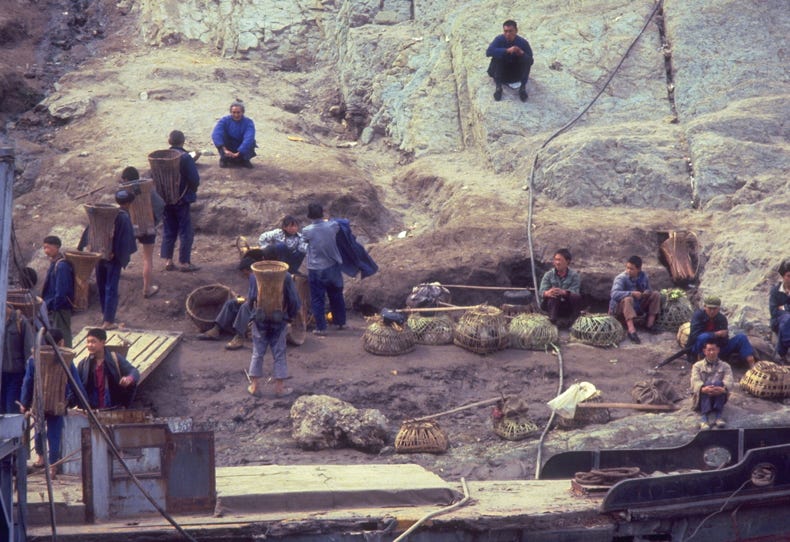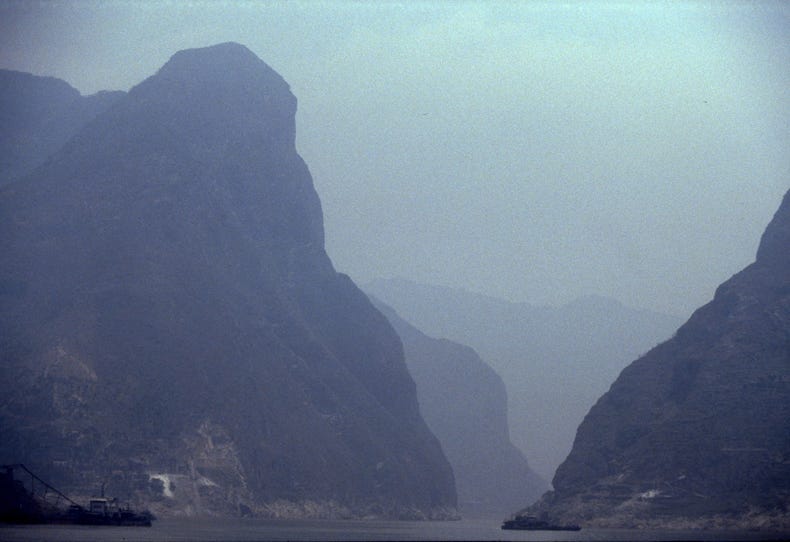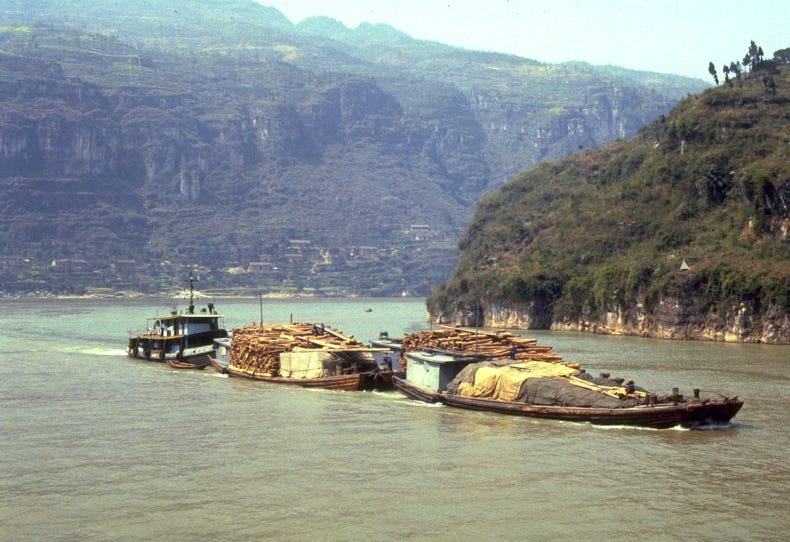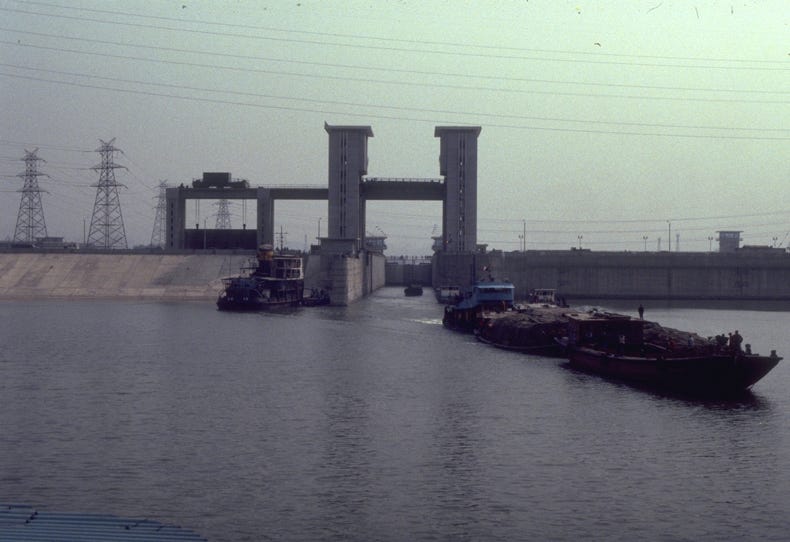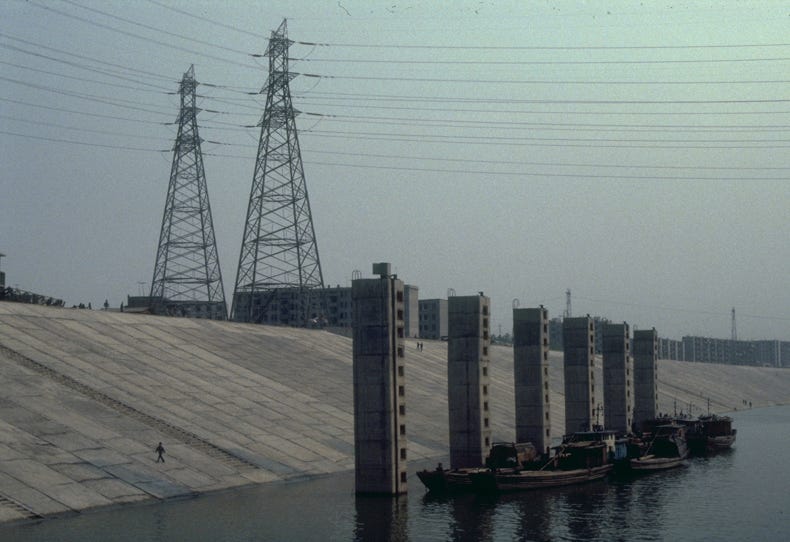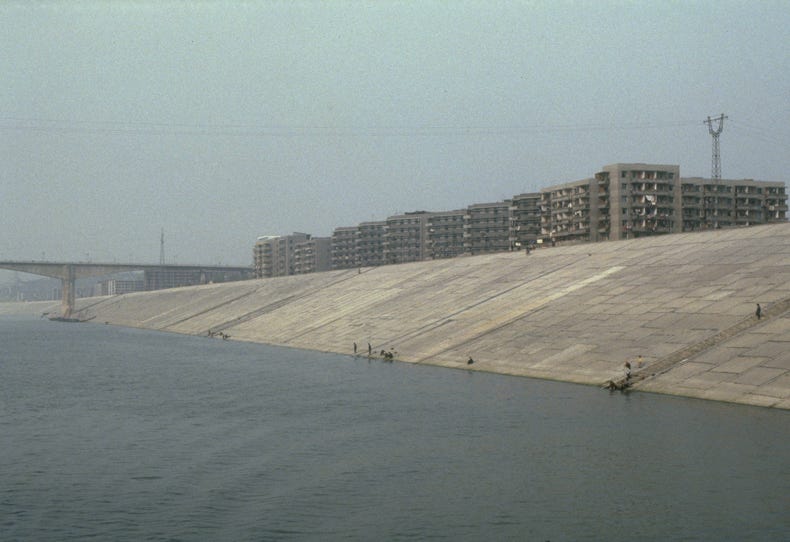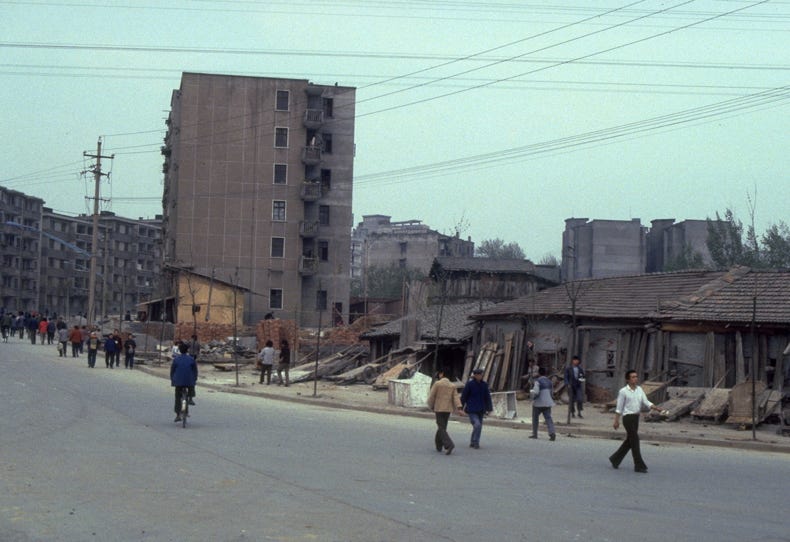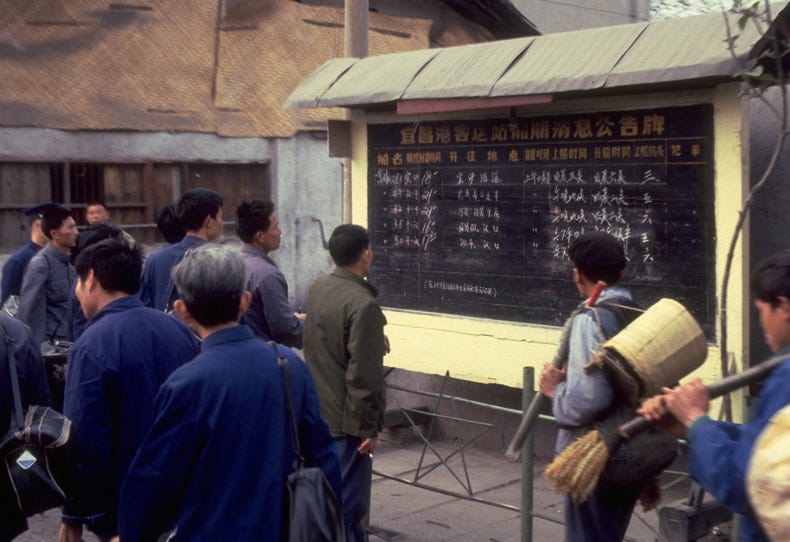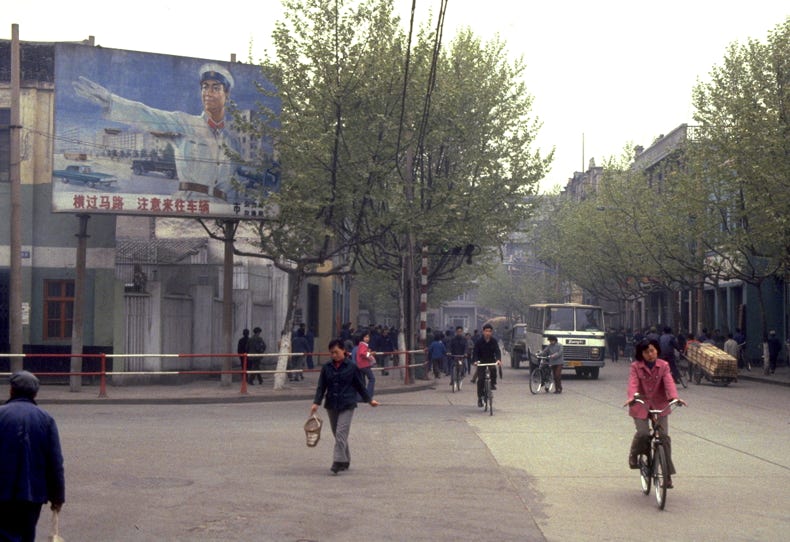

I slept surprisingly well on the ferry last night. Perhaps the half-centimetre thick brick-like mattress suited me; it certainly didn’t appeal to many of my fellow travellers.
We rose at 6:00am this morning to see Qutang Gorge, the first of the famous Three Gorges. The misty conditions added to its appearance. Although only 8 kilometres long, it is claimed to be the most spectacular of the Three Gorges with near-perpendicular cliffs rising abruptly to great heights from the river.
After a quick breakfast, we returned to the deck to see Wuxia Gorge, the smoothest of the Three Gorges. Like Qutang Gorge before it, it was very difficult to photograph because of its sheer immensity, which closes in on the river. Wuxia Gorge is about 40 kilometres long, which took about an hour and a half to negotiate.
Soon after the end of the second gorge we called into Badong, having now crossed into Hupei province. Badong was a very picturesque cliff town, grey in colour like all in this part of China. While stopped, we saw traditional-style boat building beside the river and teams of men carrying about 25 to 30 bricks each in baskets on their backs up the steep pathways away from the river.
This afternoon we reached the third gorge, Xiling Gorge. I disagree with the guidebook – this IS the most spectacular of the Three Gorges, at least at its beginning. The gorge looks like a cross between the Swiss Alps without snow and the Mediterranean coastline, with its little villages set against steeply cliffed backdrops. Villages seem to be established in inexplicably poor locations, such as impossibly steep land, but (1) they are near the Yangtze for transport, (2) they have at least a little area of soil, (3) they now have electricity, and (4) the fogs and mists are frequent enough to provide constant moisture for their crops.
Every so often a tower-like pagoda appears on the horizon. These are burial towers to accommodate the ashes of dead Buddhists, and they are generally several centuries old. Interestingly, during the 1949 revolution, when many of the temples were burned down, the burial towers were left untouched. When I took a photo of one of the towers, several older men on board were smiling and visibly delighted. Small points like that lead me to think that despite the anti-religious excesses of the Cultural Revolution, religion still means something to many of the older people.
At some stage this afternoon – I’m not sure precisely where – we passed through the site of the proposed Three Gorges Dam, which will apparently be the world’s largest dam when (and I guess IF) it is built. By late afternoon we approached a smaller (through still huge) dam which is still under construction, the Gezhouba Dam at Yichang. At Gezhouba we had to pass through a lock, a process that took a couple of hours. While passing through the lock, a high school English teacher was watching us with his class. We conversed in shouts – his English was very good and it was evident that his ability to converse with us so easily in English raised his esteem considerably in the eyes of his students.
There has been a change of plan. Originally, we were supposed to stay on board the “East is Red No.35” for another day and travel all the way downstream to Wuhan. However, the river level is apparently a bit too low to allow this, so we have disembarked at Yichang, where we will stay overnight and fly to Wuhan tomorrow instead.
So, here we are at the Peach Flower Hotel in Yichang, easily the newest and best hotel in Yichang. It is a world away from the “East is Red No.35” – and a far better world at that.

